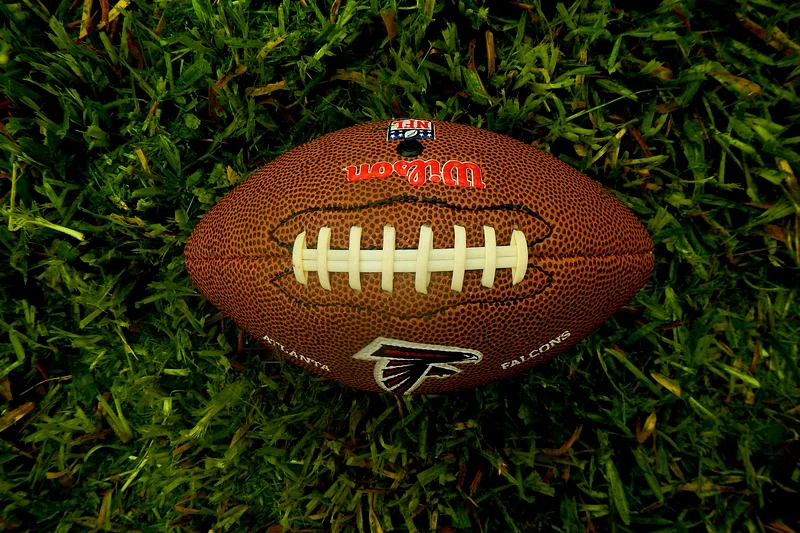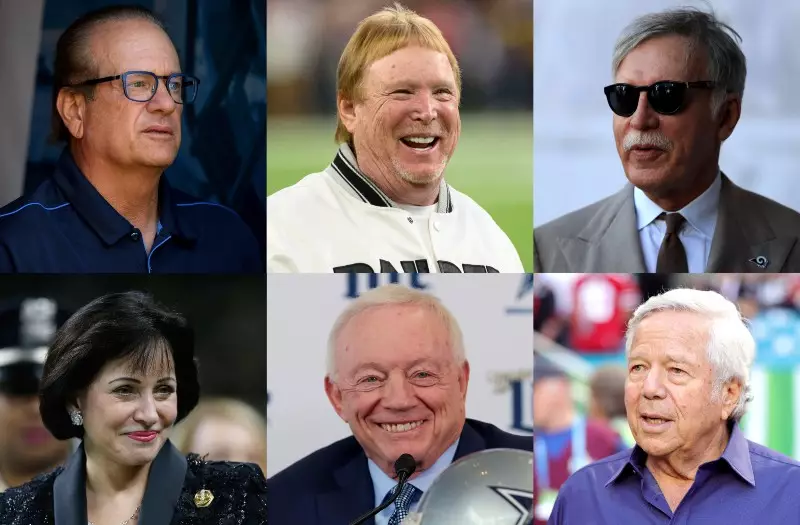
Understanding the Reasons Behind the Decrease in Your Car’s Fuel Efficiency Over Time
August 23, 2024The National Football League (NFL) is one of the most prominent and influential professional sports leagues in the United States and, increasingly, worldwide. With a rich history, passionate fan base, and significant cultural impact, the NFL has evolved into a sports entertainment powerhouse. This article delves into the NFL’s origins, structure, operations, and cultural significance.
Table of Contents
- Introduction
- History of the NFL
- Early Beginnings
- Merger and Modernization
- Expansion and Growth
- Structure and Organization
- League Composition
- Divisions and Conferences
- Governance and Leadership
- Season Format
- Preseason
- Regular Season
- Playoffs
- The Super Bowl
- Teams and Rivalries
- Notable Teams
- Historic Rivalries
- Players and Personnel
- Player Draft and Development
- Positions and Roles
- Coaching and Management
- Business and Economics
- Revenue Streams
- Broadcasting and Media Rights
- Sponsorships and Partnerships
- Cultural Impact
- Popularity and Fan Engagement
- NFL and Society
- Controversies and Challenges
- The Future of the NFL
- Conclusion
1. Introduction
The NFL is a professional American football league consisting of 32 teams, divided equally between the National Football Conference (NFC) and the American Football Conference (AFC). Established in 1920, the league has grown into a multi-billion-dollar enterprise, captivating millions of fans each season with its blend of athleticism, strategy, and spectacle.
2. History of the NFL
Early Beginnings
The NFL was founded on August 20, 1920, as the American Professional Football Association (APFA) in Canton, Ohio. It was renamed the National Football League in 1922. The league’s inaugural season featured 14 teams, though many struggled financially and competitively in its early years.
Key early teams included the Decatur Staleys (now the Chicago Bears), the Green Bay Packers, and the Chicago Cardinals (now the Arizona Cardinals). The Packers, established in 1919 by Earl “Curly” Lambeau and George Halas, remain one of the oldest continuously operating teams in the league.
Merger and Modernization
By the mid-20th century, the NFL had become a more stable and competitive league, especially after absorbing teams from rival leagues like the All-America Football Conference (AAFC) in 1950 and merging with the American Football League (AFL) in 1970. The AFL-NFL merger led to the creation of the modern conference structure, dividing teams into the NFC and AFC.
Expansion and Growth
The NFL has expanded several times since its inception, growing from its original teams to the current 32-team structure. Notable expansions include the addition of the Minnesota Vikings (1961), the New Orleans Saints (1967), and the Seattle Seahawks and Tampa Bay Buccaneers (1976). The league continues to explore opportunities for growth, including potential international expansion.
3. Structure and Organization
League Composition
The NFL comprises 32 teams, each representing cities across the United States. These teams are divided equally between two conferences:
- National Football Conference (NFC): Contains 16 teams.
- American Football Conference (AFC): Contains 16 teams.
Each conference is further divided into four divisions: East, North, South, and West, each comprising four teams.
Divisions and Conferences
Divisional alignments are based on geography, aiming to foster regional rivalries and minimize travel. For example:
- NFC East: Dallas Cowboys, New York Giants, Philadelphia Eagles, Washington Commanders
- AFC East: Buffalo Bills, Miami Dolphins, New England Patriots, New York Jets
This structure facilitates scheduling, playoff seeding, and the preservation of historic rivalries.
Governance and Leadership
The NFL is governed by the Commissioner, who oversees league operations, enforces rules, and represents the league in negotiations. As of my knowledge cutoff in September 2021, the Commissioner was Roger Goodell, who has served since 2006.
The NFL operates as a partnership among its 32 teams, each of which holds an equal vote in league matters, including rule changes and collective bargaining agreements.
4. Season Format
The NFL season is divided into several phases:
Preseason
Before the regular season begins, teams participate in a series of exhibition games known as the preseason. These games serve to evaluate players, particularly those on the fringe of making the roster, and to prepare the team for the regular season.
Regular Season
The regular season typically runs from September to December, with each team playing 17 games over 18 weeks (as of the 2021 season; previously, it was 16 games over 17 weeks). The schedule includes:
- Divisional Games: Teams play home and away against their division rivals.
- Conference Games: Teams play against other teams within their conference.
- Interconference Games: Teams also play against teams from the opposite conference based on a rotating schedule.
Playoffs
Following the regular season, the top teams advance to the playoffs, a single-elimination tournament culminating in the Super Bowl. The playoff structure includes:
- Wild Card Teams: The best non-division-winning teams in each conference.
- Division Winners: The team with the best record in each division.
- Byes and Seeding: Higher-seeded teams receive byes and home-field advantages.
The Super Bowl
The Super Bowl is the championship game of the NFL, typically held on the first Sunday in February. It features the champions of the NFC and AFC and is one of the most-watched sporting events globally. The game is known for its high-profile halftime shows and extensive media coverage.
5. Teams and Rivalries
Notable Teams
Several NFL teams have storied histories and significant fan bases:
- New England Patriots: Known for their dominant run in the early 21st century under quarterback Tom Brady and coach Bill Belichick.
- Pittsburgh Steelers: Renowned for their “Steel Curtain” defense and multiple Super Bowl victories.
- Dallas Cowboys: Marketed as “America’s Team,” known for their large fan base and iconic branding.
- Green Bay Packers: The oldest franchise with a strong community ownership model.
Historic Rivalries
Rivalries add intensity and tradition to the league:
- Green Bay Packers vs. Chicago Bears: The oldest rivalry in the NFL, dating back to 1921.
- Pittsburgh Steelers vs. Baltimore Ravens: A fierce AFC North rivalry known for physical play.
- Dallas Cowboys vs. Washington Commanders: A longstanding NFC East rivalry.
- San Francisco 49ers vs. Seattle Seahawks: A competitive rivalry within the NFC West.
6. Players and Personnel
Player Draft and Development
The NFL Draft is an annual event where teams select eligible college football players to join the league. The draft consists of seven rounds, with order determined by the previous season’s standings. It serves as a critical mechanism for talent acquisition and team building.
Positions and Roles
Football is a position-specific game, with players specializing in offense, defense, or special teams:
- Offense: Includes positions like quarterback, running back, wide receiver, offensive lineman, and tight end.
- Defense: Includes positions like defensive lineman, linebacker, cornerback, and safety.
- Special Teams: Includes positions like kicker, punter, and return specialists.
Each position has specific roles and responsibilities essential to the team’s strategy.
Coaching and Management
Teams are led by a coaching staff, including:
- Head Coach: Responsible for overall team strategy and performance.
- Offensive Coordinator: Designs and implements the offensive game plan.
- Defensive Coordinator: Designs and implements the defensive game plan.
- Position Coaches: Specialize in coaching specific positions.
Management includes General Managers, who handle player personnel decisions, and other executives overseeing operations, marketing, and finance.
7. Business and Economics
Revenue Streams
The NFL generates revenue through various channels:
- Television and Broadcasting Rights: A significant portion of revenue comes from lucrative TV contracts with networks like NBC, CBS, Fox, and ESPN.
- Sponsorships and Advertising: Corporate partnerships and advertising deals contribute substantially.
- Ticket Sales and Merchandise: Revenue from ticket sales, concessions, and merchandise sales.
- Licensing: Income from licensing team logos and NFL branding for products and media.
Broadcasting and Media Rights
The NFL’s media rights deals are among the most lucrative in sports. In 2021, the league signed new contracts with major networks, ensuring widespread national and international coverage. The NFL also leverages digital platforms and streaming services to reach a broader audience.
Sponsorships and Partnerships
The NFL partners with numerous brands for sponsorships and official partnerships. Notable partnerships include those with Nike (official uniform provider), Pepsi (official soft drink), and various other brands across different industries.
8. Cultural Impact
Popularity and Fan Engagement
The NFL enjoys immense popularity in the United States, with a dedicated fan base that spans diverse demographics. Fan engagement is fostered through:
- Tailgating and Game-Day Traditions: Pre-game gatherings and rituals that enhance the spectator experience.
- Fantasy Football: A popular pastime where fans draft and manage their teams based on real player performances.
- Social Media and Digital Content: The NFL actively engages fans through platforms like Twitter, Instagram, and YouTube.
NFL and Society
The NFL plays a significant role in American culture, influencing entertainment, fashion, and social trends. It also engages in community initiatives, including youth programs, charity work, and promoting social causes.
Controversies and Challenges
The NFL has faced various challenges and controversies, including:
- Player Safety: Concerns over concussions and long-term health effects have led to changes in rules and equipment.
- Social Issues: Players’ activism on social justice issues has sparked both support and backlash.
- League Policies: Disputes over policies related to player conduct, national anthem protests, and other issues have created public debates.
9. The Future of the NFL
The NFL continues to explore opportunities for growth and adaptation:
- International Expansion: The league has hosted regular-season games in London and Mexico City, aiming to grow its global footprint.
- Technology Integration: Advances in technology are enhancing fan experiences through augmented reality, enhanced broadcasts, and interactive content.
- Rule Changes: Ongoing adjustments to rules aim to improve player safety, game flow, and competitiveness.
- Sustainability Initiatives: Efforts to reduce the environmental impact of games and operations are becoming more prominent.
10. Conclusion
The National Football League has grown from a fledgling organization in the early 20th century to a dominant force in American sports and global entertainment. Its intricate blend of competition, strategy, and cultural significance continues to captivate millions of fans each year. As the league navigates the challenges of the modern era, it remains a testament to the enduring appeal and dynamic nature of professional football.


